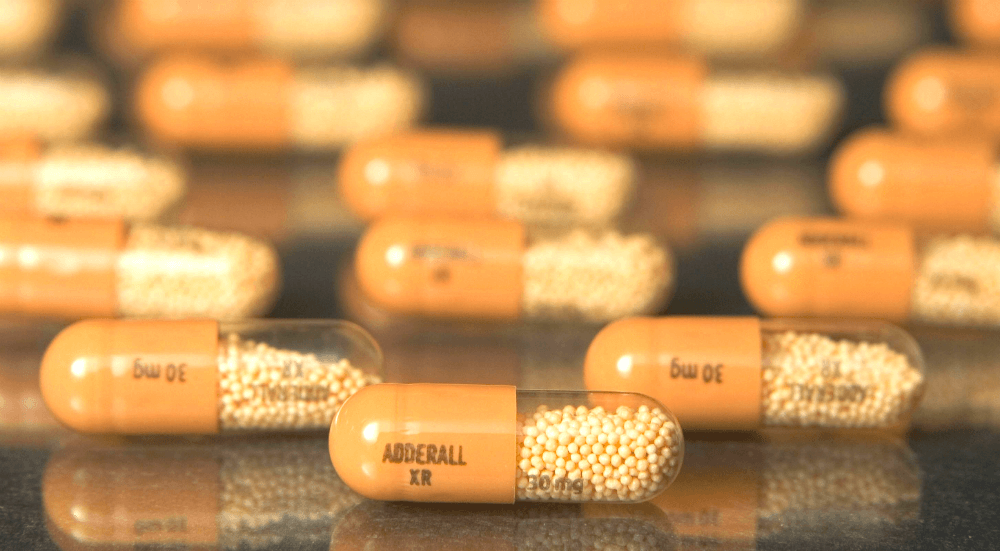Adderall is a widely prescribed medication for treating narcolepsy and ADHD. Although it is highly effective in improving concentration and focus, taking it correctly can bring about a tremendous increase in the benefit you achieve while using it. In this article, we will explore what Adderall is, its potential side effects, as well as how to make Adderall more effective.
What Is Adderall?
Adderall is a prescription medication used to treat attention deficit hyperactivity disorder (ADHD). It contains amphetamine and dextroamphetamine, which are powerful central nervous system stimulants. Amphetamine was accidentally synthesized by Gordon Alles in the 1920s in an attempt to develop an effective orally-administered medication for asthma. Over time, different scientists and pharmaceutical companies improved on it, exploring different applications such as cognitive enhancement and weight loss, among others.
Later on, the Food and Drug Administration made strict regulations to stop the ingredient from being used for such uses that had limited studies supporting their safety and effectiveness. In 2002, it approved its combination with dextroamphetamine for treating ADHD in adults and children under the brand name Adderall [1][2]. Today, it is considered a first-line treatment for the condition.
What About Side Effects and Safety?
Adderall is effective, but it is worth noting that it has side effects, just like every other drug. Consequently, it is important to take it exactly as prescribed to prevent unwanted side effects. The common adverse effects associated with it include [3]:
- headache;
- loss of appetite;
- nausea;
- weight loss;
- upset stomach;
- dry mouth;
- dehydration;
- insomnia.
Note that more serious negative after-effects, such as rapid heart rate, mood swings, depression, high blood pressure, and mood changes, may occur. To get the best out of this drug, it is essential to strictly adhere to your doctor’s instructions for use. Avoid taking more than the recommended dosage, as that can greatly increase the risk of adverse effects.
Tips on How to Make Adderall Most Effectively
To get the best out of Adderall, it has to be taken correctly. There are two types available: immediate-release (IR) and extended-release (XR). Adderall IR gets absorbed quickly, and its effects kick in relatively fast, often within 1-3 hours after it is administered. On the other hand, Adderall XR releases the medication gradually over a longer period of time, lasting 10-12 hours.
It is worth noting that the type of Adderall you choose to take will determine the dosage and how you use it.
Adderall IR is available in 7 dose strengths: 5 mg, 7.5 mg, 10 mg, 12.5 mg, 15 mg, and 20 mg, and it can be taken multiple times a day. It allows for flexibility in dosing, and this makes it useful for people who need to adjust the dose of their medication throughout the day.
On the other hand, Adderall XR is available in 6 dose strengths of 5 mg, 10 mg, 15 mg, 20 mg, 25 mg, and 30 mg, and it provides a consistent or steady level of medication throughout the day [4]. This makes it effective in helping to reduce the risks of negative after-effects associated with fluctuation in drug levels, as well as maintaining symptom control. Note that this version of the drug must only be taken once per day – convenient for people who have a hard time remembering to keep up with multiple uses of meds per day.
Regardless of what type of Adderall is taken, the right dosage will depend on the severity of the condition, weight, age, and other medications being used. Generally, the extended-release capsules are taken once a day in the morning. On the other hand, the immediate-release tablets are typically taken 2-3 times per day, with the last doses taken in the late afternoon or early evening to avoid making nighttime sleep challenging. Note that the right dose is best determined by a doctor.
Tips for making Adderall More effective
Here are some tips for safely and effectively taking Adderall [5][6]:
| S/N | Tip | Description |
| 1. | Do not take the pills on an empty stomach | Taking Adderall on an empty stomach may increase the risk of adverse effects. It is advisable to have a light snack or meal before popping the pill. |
| 2. | Follow the dosing instructions to the letter | Taking more than the recommended Adderall dosage can increase the risk of experiencing side effects, while taking too little may lead to unrealized therapeutic effects. |
| 3. | Stay hydrated throughout the day | One of the common adverse effects of this drug is dehydration, which can lead to other side effects, such as headache. It is advisable to drink plenty of water at regular intervals to make up for what’s lost. |
| 4. | Take breaks or pauses as needed | Taking medications too frequently without taking pauses can cause patients to develop tolerance. This is also the case for Adderall. Some doctors often recommend taking periodic breaks throughout the day or staying off the meds on weekends. |
| 5. | Avoid alcohol and other substances | Alcohol can interact with Adderall in ways that may increase the risk of side effects. Therefore, it is important to steer clear of alcohol when taking the medication. It is important to talk to your doctor about other substances that could interact with it so you can avoid them. |
Avoiding certain foods such as citrus juices and vitamin C, eating a good breakfast before taking the drug, getting quality sleep, and taking vitamin supplements are also some good practices that can help increase Adderall’s effectiveness [7].
Adderall is a prescription medication; as such, it should only be taken on the recommendation and guidance of a doctor or licensed healthcare provider. Consult with your doctor before starting treatment with it or making any changes to the regimen.
The Verdict: Make Adderall Most Effectively
Adderall can be an effective medication for treating narcolepsy and ADHD if it is used correctly. There are several ways to make it more effective, but one of the most important ones is using it exactly as prescribed by a doctor or licensed healthcare provider. By following the tips we’ve provided in this guide, you can rest assured you’re getting the best of the medication while minimizing the risks of potential negative after-effects.
However, remember that different people respond to drugs in unique ways, and what works for one person may not work for the next. Consulting your doctor before starting treatment with the drug and having them supervise how you respond to it will go a long way in helping you improve its effectiveness.
References
- Generation Adderall. By Casey Schwartz. Retrieved: March 10, 2023. Nytimes.com.
- Drug Approval Package: Adderall (Mixed Salts of a Single-Entity Amphetamine Product). Retrieved: March 10, 2023. Accessdata.fda.gov.
- Adderall Oral: Uses, Side Effects, Interactions, Pictures, Warnings & Dosing. Retrieved: March 10, 2023. Webmd.com.
- Adderall (amphetamine/dextroamphetamine). Retrieved: March 10, 2023. Ibcces.org.
- Adderall. Retrieved: March 10, 2023. Written by HealthMatch Staff. Medically reviewed by Dr. Trish Kahawita, MBBS, FRACGP, CWH, DCH, CHIA, ESME.
- Adderall XR dosage, forms, and strengths. Medically reviewed by Gerardo Sison, Pharm.D. Retrieved: March 10, 2023. Singlecare.com.
- How to Make Adderall Last Longer and Stronger – a Guide. By Michael Chamberlain. Retrieved: March 10, 2023. Prescriptionhope.com.







